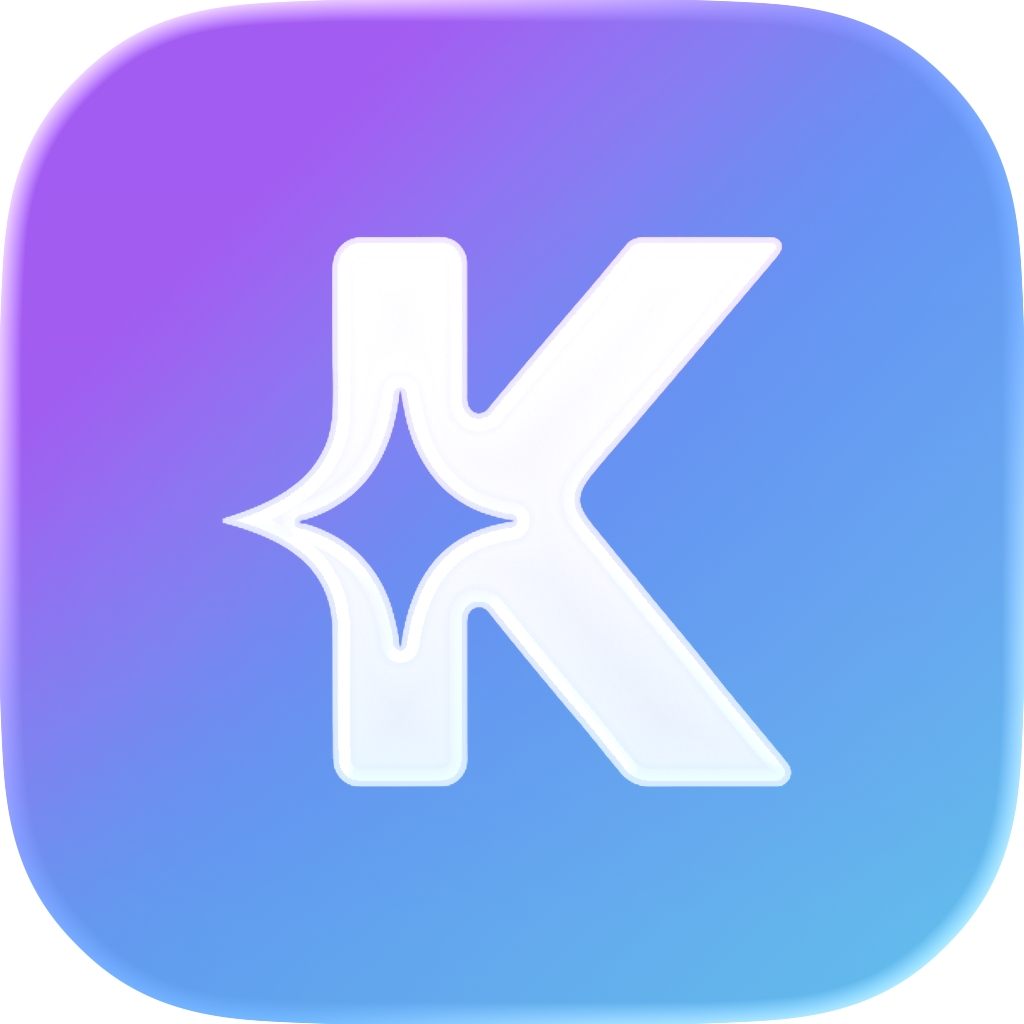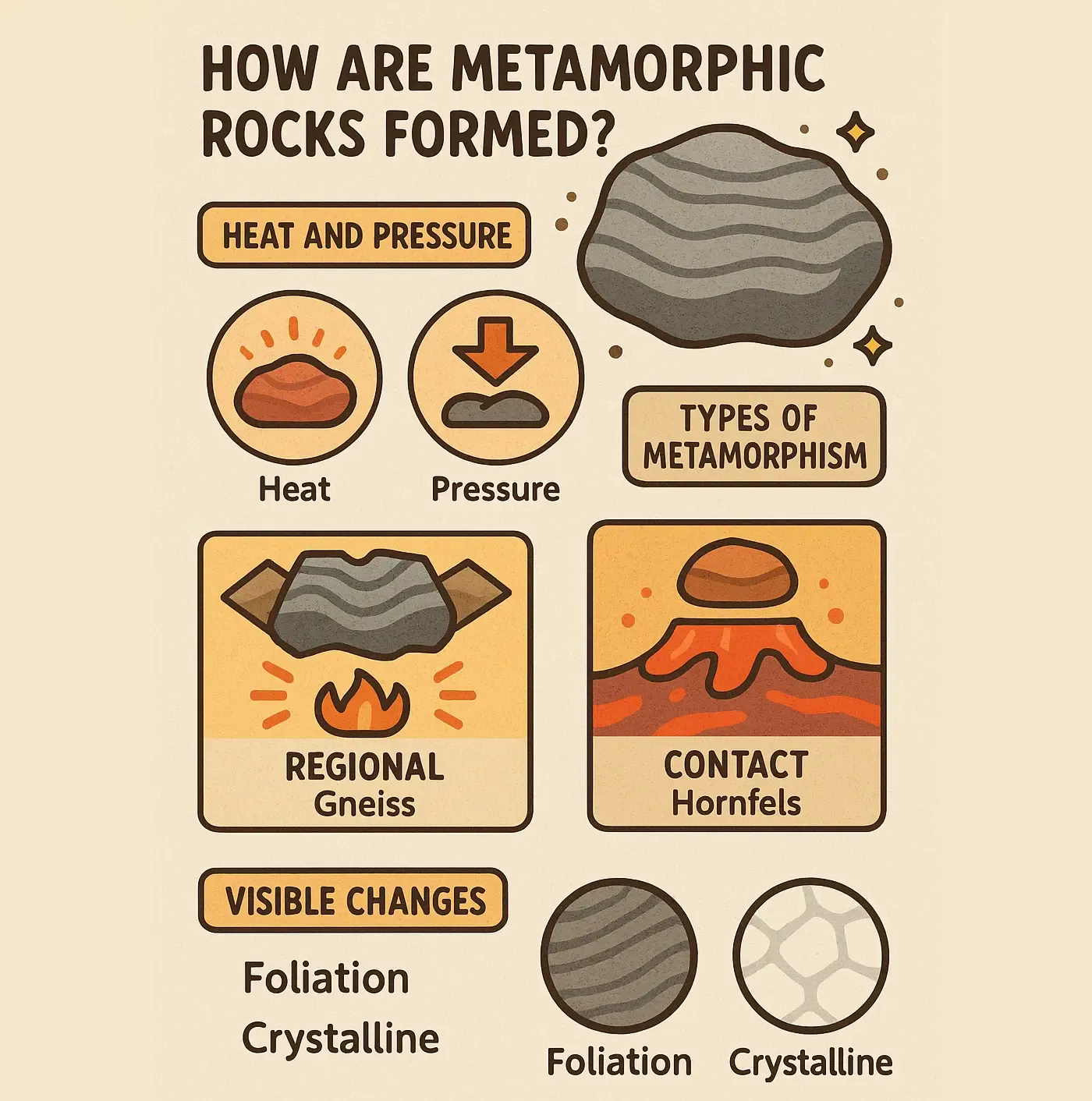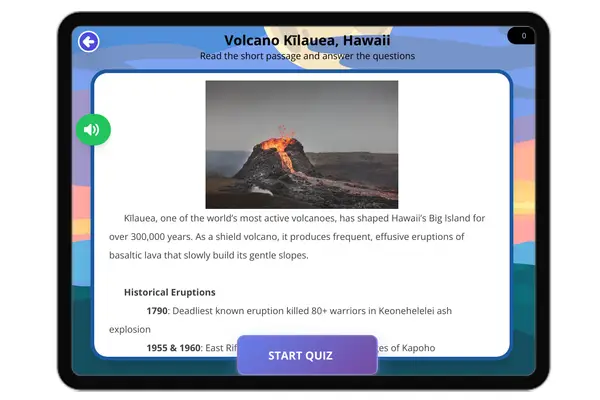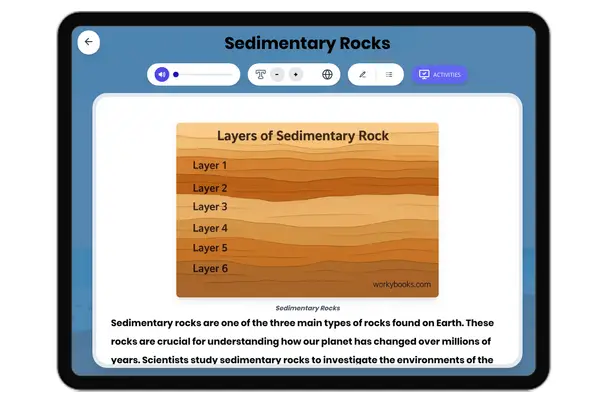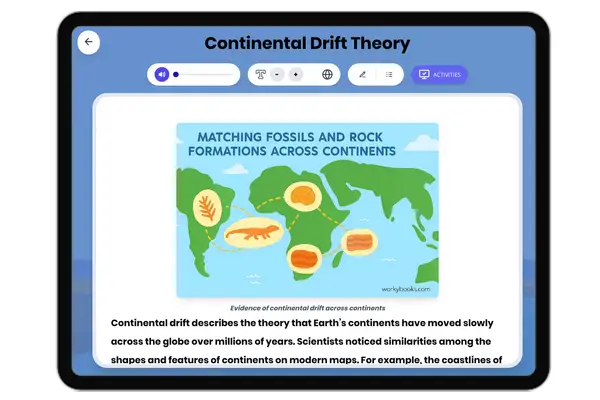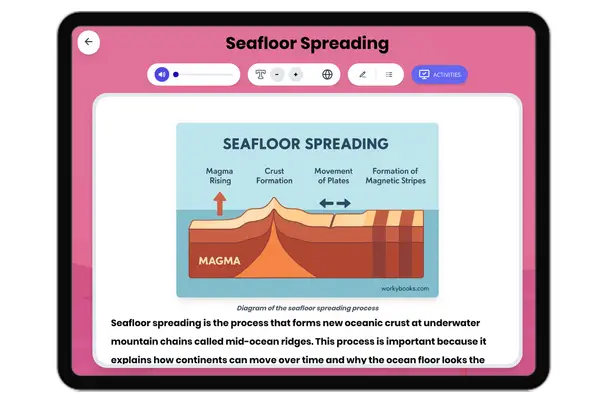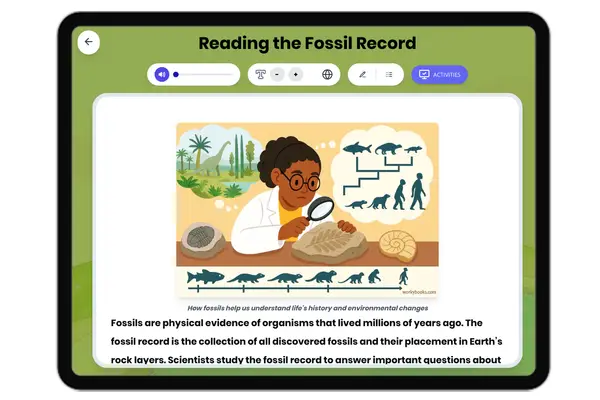How Are Metamorphic Rocks Formed? — Reading Comprehension
Grades
- 5
- 6
- 7
- 8
Standards
- MS-ESS2-3
- RI.6.1
- RI.7.4
- RI.8.2
PRINT+DIGITAL RESOURCE
This learning resource is available in interactive and printable formats. The interactive worksheet can be played online and assigned to students. The Printable PDF version can be downloaded and printed for completion by hand.
About This Reader
This science passage explains how metamorphic rocks form through metamorphism, detailing the effects of heat (150°C-1,000°C) and pressure on existing rocks. It describes regional metamorphism (large-scale) and contact metamorphism (near magma), with examples like shale transforming to slate and limestone becoming marble. The text highlights foliation and crystalline textures, while connecting metamorphic rocks to tectonic activity and Earth's history. Aligns with NGSS MS-ESS2-3 (Earth's systems) and CCSS RI.6.1 (textual evidence). The passage emphasizes real-world applications of metamorphic rocks like marble in construction and garnet schist as abrasives, making complex geological processes accessible for middle school learners.
Perfect For:
👩🏫 Teachers
- • Reading comprehension practice
- • Auto-graded assessments
- • Literacy skill development
👨👩👧👦 Parents
- • Reading practice at home
- • Comprehension improvement
- • Educational reading time
🏠 Homeschoolers
- • Reading curriculum support
- • Independent reading practice
- • Progress monitoring
Reading Features:
📖
Reading Passage
Engaging fiction or nonfiction text
❓
Comprehension Quiz
Auto-graded questions
📊
Instant Feedback
Immediate results and scoring
📄
Printable Version
Download for offline reading
🔊
Read Aloud
Voice-over with word highlighting
